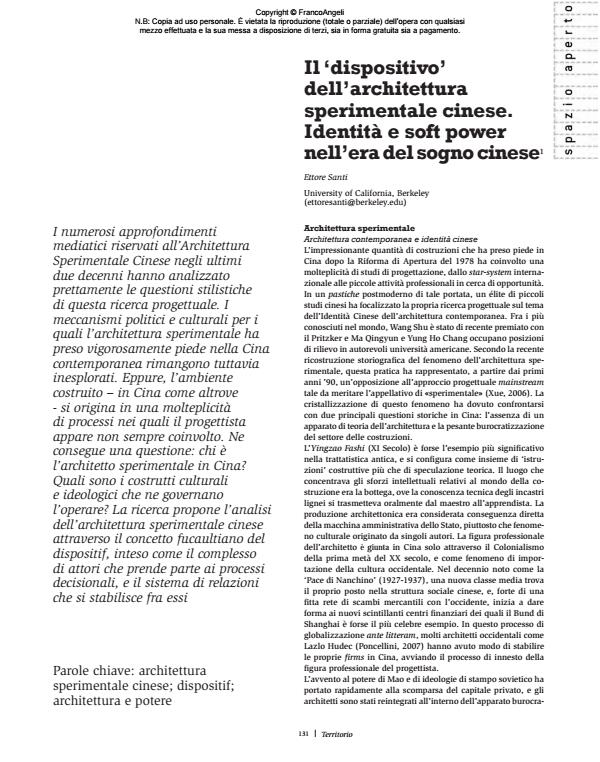Il ‘dispositivo’ dell’architettura sperimentale cinese. Identità e soft power nell’era del sogno cinese
Titolo Rivista TERRITORIO
Autori/Curatori Ettore Santi
Anno di pubblicazione 2016 Fascicolo 2016/76
Lingua Italiano Numero pagine 10 P. 131-140 Dimensione file 418 KB
DOI 10.3280/TR2016-076018
Il DOI è il codice a barre della proprietà intellettuale: per saperne di più
clicca qui
Qui sotto puoi vedere in anteprima la prima pagina di questo articolo.
Se questo articolo ti interessa, lo puoi acquistare (e scaricare in formato pdf) seguendo le facili indicazioni per acquistare il download credit. Acquista Download Credits per scaricare questo Articolo in formato PDF

FrancoAngeli è membro della Publishers International Linking Association, Inc (PILA)associazione indipendente e non profit per facilitare (attraverso i servizi tecnologici implementati da CrossRef.org) l’accesso degli studiosi ai contenuti digitali nelle pubblicazioni professionali e scientifiche
I numerosi approfondimenti mediatici riservati all’Architettura Sperimentale Cinese negli ultimi due decenni hanno analizzato prettamente le questioni stilistiche di questa ricerca progettuale. I meccanismi politici e culturali per i quali l’architettura sperimentale ha preso vigorosamente piede nella Cina contemporanea rimangono tuttavia inesplorati. Eppure, l’ambiente costruito - in Cina come altrove - si origina in una molteplicità di processi nei quali il progettista appare non sempre coinvolto. Ne consegue una questione: chi è l’architetto sperimentale in Cina? Quali sono i costrutti culturali e ideologici che ne governano l’operare? La ricerca propone l’analisi dell’architettura sperimentale cinese attraverso il concetto fucaultiano del dispositif, inteso come il complesso di attori che prende parte ai processi decisionali, e il sistema di relazioni che si stabilisce fra essi
Parole chiave:Architettura sperimentale cinese; dispositif; architettura e potere
- School of Architecture(s) - New Frontiers of Architectural Education Marco Trisciuoglio, Bao Li, pp.375 (ISBN:978-3-031-71958-5)
Ettore Santi, Il ‘dispositivo’ dell’architettura sperimentale cinese. Identità e soft power nell’era del sogno cinese in "TERRITORIO" 76/2016, pp 131-140, DOI: 10.3280/TR2016-076018